Saffron, this precious and priceless spice, often called "red gold", is the hidden treasure of Crocus sativus, a small violet flower that blooms mainly in autumn in our gardens. However, success with this crop does not stop at planting the bulbs: you must then know how to harvest, dry and store saffron correctly to preserve all its aromatic qualities that will flavour your dishes. Discover the steps for harvesting, drying and storing saffron.
A few words about Crocus sativus: the saffron flower
The Crocus sativus, also known as saffron crocus, is a small violet flower. Native to regions such as Anatolia and the Mediterranean, this perennial plant is distinguished by its three bright red stigma, which, once harvested, dried and turned into powder, become the most precious (and most expensive) spice in the world: saffron.
Crocus sativus grows from a bulb and blooms mainly in autumn. It needs little water, but well-drained soil and plenty of sun.
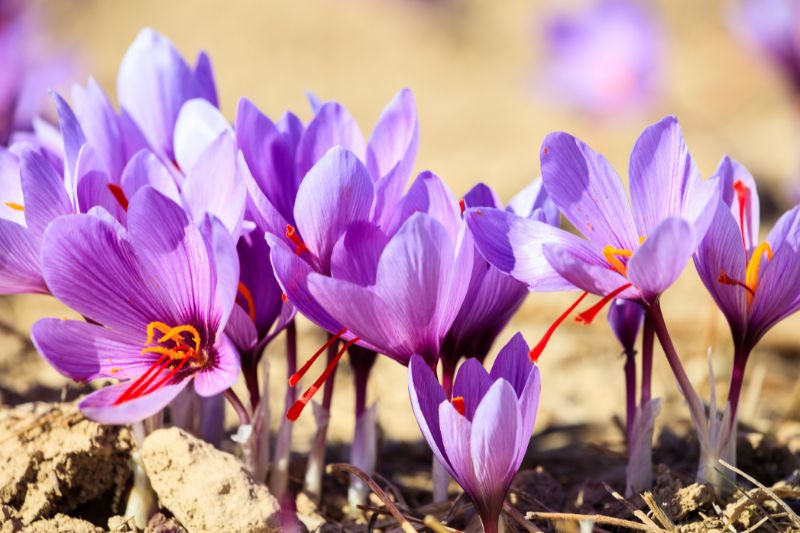
When to harvest saffron?
Saffron harvest generally takes place in autumn, between mid-September and December, when Crocus sativus flowers open. Flowers remain open for only a few days, so you must act quickly.
The best time to pick saffron flowers is early morning, before sun becomes too strong. At that time, flowers are still closed, which makes picking easier and preserves the precious red stigma. The longer a flower stays open, the greater the risk of saffron deteriorating or losing quality.
How to pick saffron?
Picking saffron must be done gently to preserve this spice. Here are the steps to follow:
1- Using a fine, clean pair of scissors, cut the entire flower. Harvest only mature flowers to avoid damaging other flower buds still forming.
2- Once flowers are harvested, you will need to separate the red stigma from the rest of the flower. Ideally, perform this operation indoors, away from humidity and wind. Each flower contains three stigma. This is the part used as the spice. Using a fine pair of scissors or tweezers, remove the three red stigma. All that remains is to dry them.
3- Once the stigma are extracted, the next step is drying. This process concentrates the aromas and ensures long-term storage.
Note: In Crocus sativus, only these three stigma are edible. The rest of the plant is toxic.
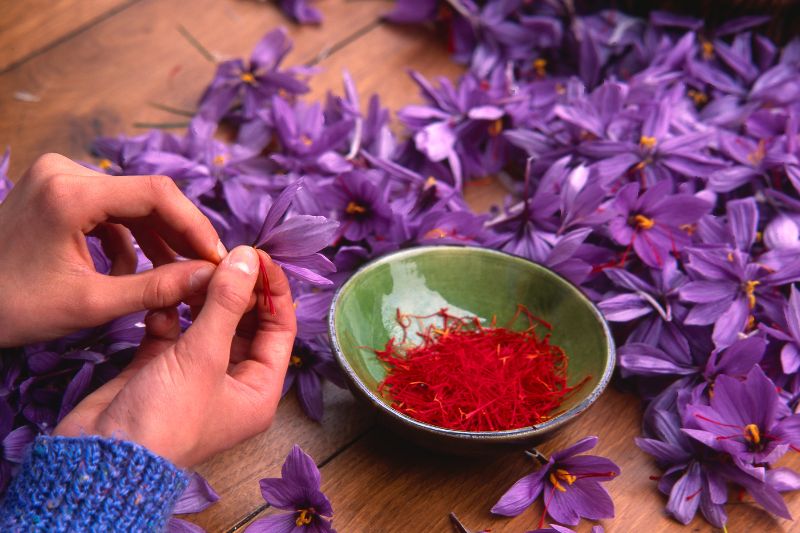
How to dry saffron?
There are several methods to dry saffron, but all rely on the same principle: gently evaporate moisture while preserving aromatic compounds.
- Air-drying: Spread the stigma on a tray or sieve in a dry, dark and well-ventilated place. Do not expose them directly to sun to avoid degrading the aromas. Wait a few days until stigma are dry.
- Oven-drying: This method is quicker but requires care. Set oven to a very low temperature (between 30 °C and 50 °C) and place stigma on a tray lined with baking paper. Leave to dry for 15 to 30 minutes. Check regularly to ensure they do not burn. Also be aware that some ovens' ventilation can blow the stigma about.
- Using a dehydrator: Set the device to a low temperature and leave to dry for a few hours.
Once dried, the stigma should be brittle and not flexible. If you can still bend them, they still contain moisture, which could impair storage. Properly dried saffron should have a slightly crunchy texture without being overly friable.
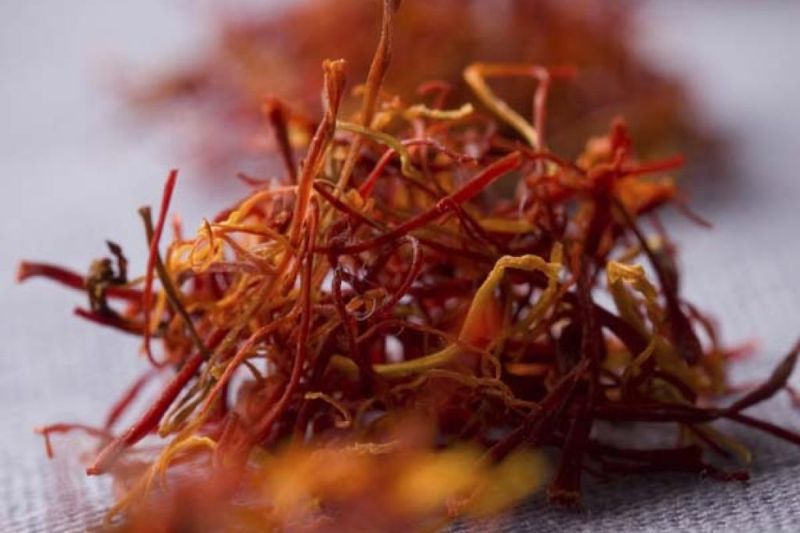
How to store saffron after harvest?
Saffron is sensitive to air, light and humidity. To preserve its aromas and qualities over the long term, store it correctly.
- Saffron can be kept in airtight containers, ideally non-transparent to protect flavours from light, such as a dark glass jar or porcelain or ceramic pot.
- Store this jar in a cool, dry place away from direct light and temperature fluctuations. A kitchen cupboard or a well-ventilated cellar can be suitable.
- When saffron is properly dried and stored, it can keep for two to three years without losing its qualities.
Tip: To check whether your saffron is still good, grind a small amount and smell. If the aroma is still strong and fragrant, that is a good sign. If not, it may have lost intensity and it is time to renew your stock.
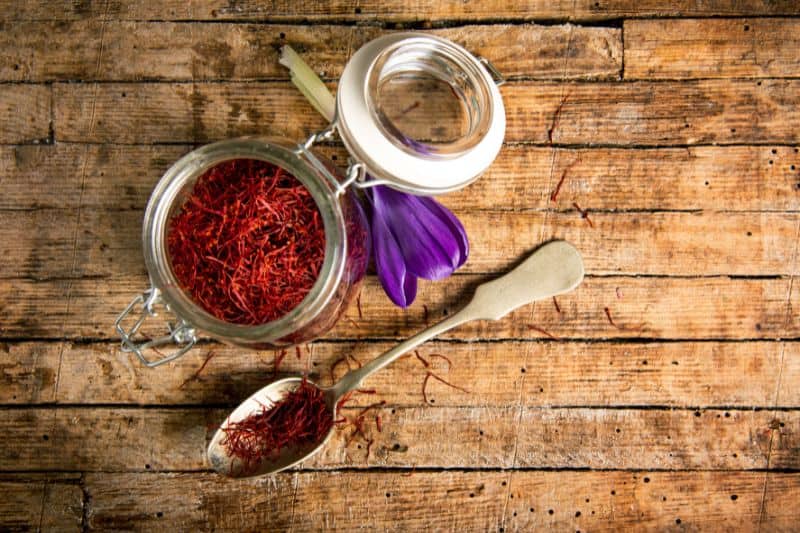
Using saffron in cooking
Before adding it to dishes, lightly grind the stigma and let them infuse in hot water, stock, sauce, wine or milk for about 10 to 20 minutes. This releases colour and aromas. You can then incorporate this infusion into preparations: paella, risotto, soups, sauces, or even desserts such as saffron cream.































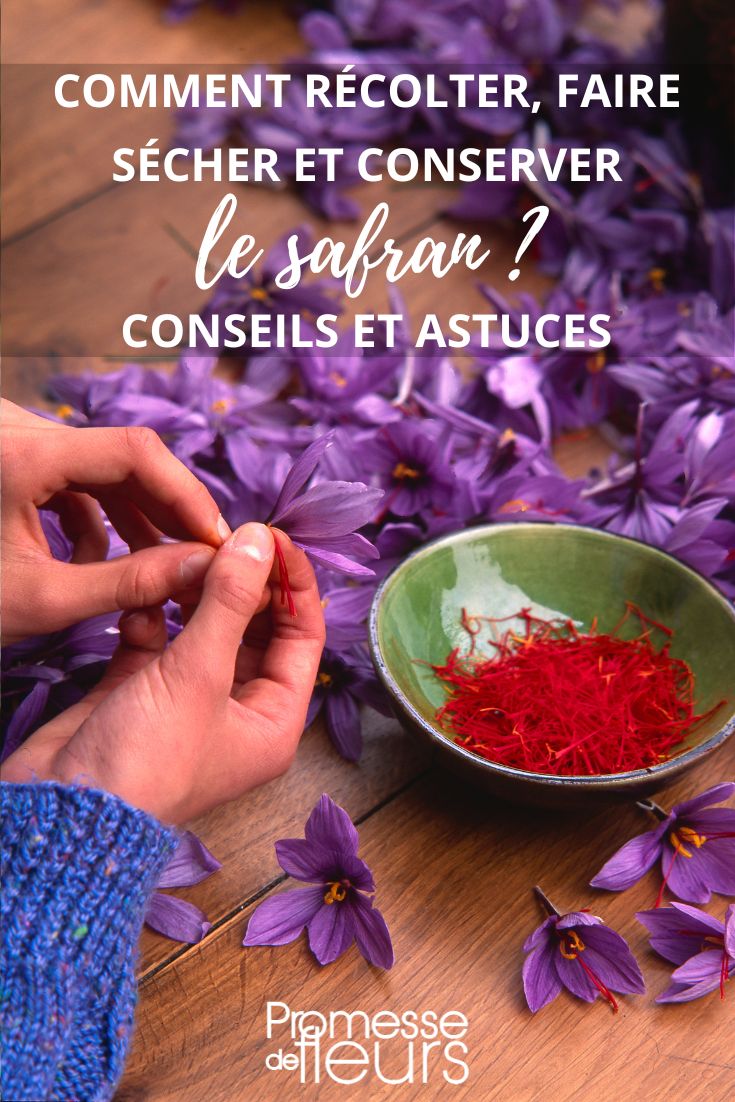
Comments